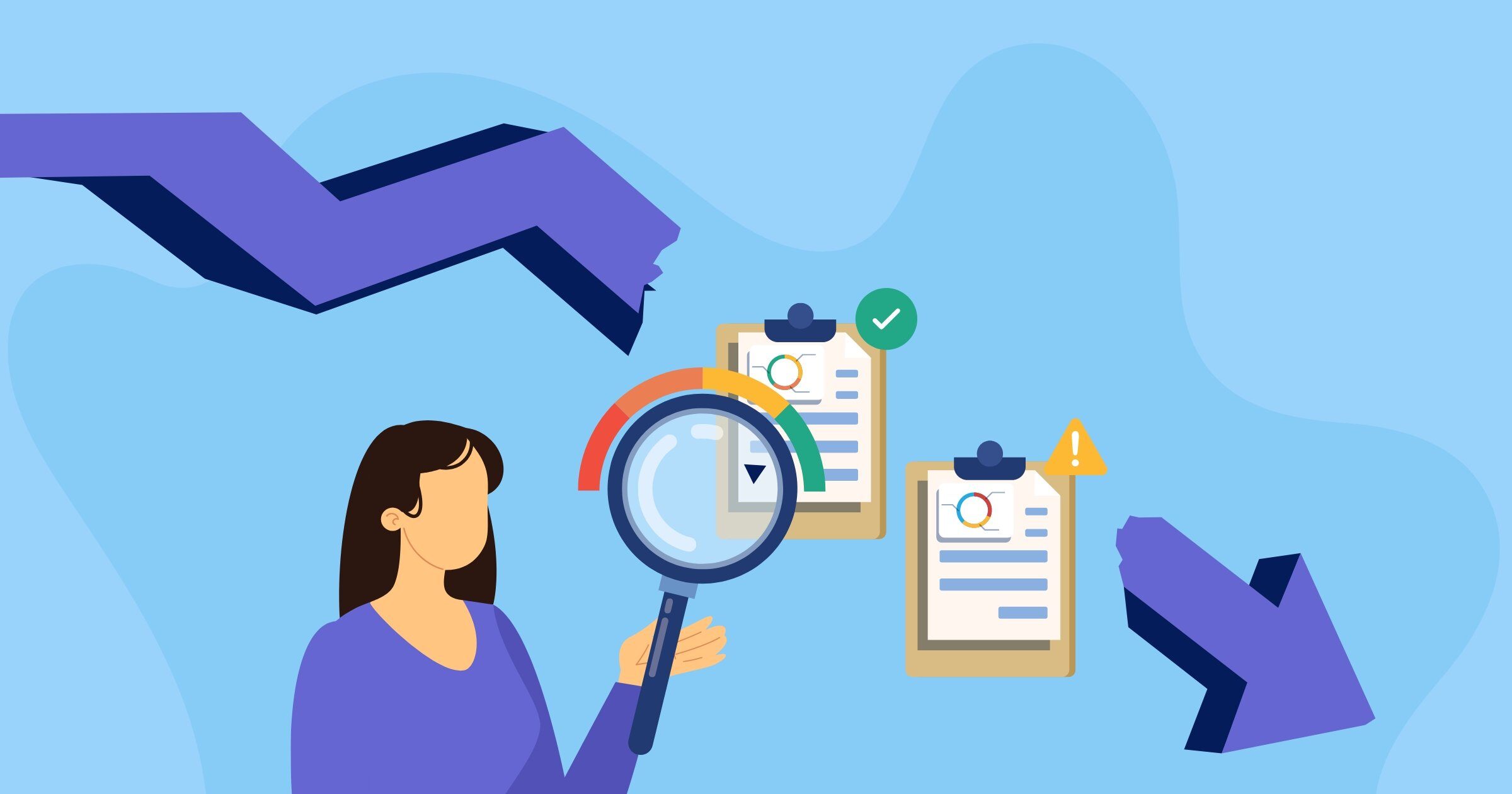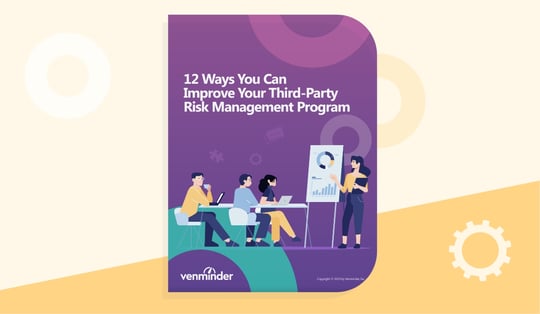In today's dynamic business landscape, managing and mitigating risks is imperative for organizations to thrive and comply with industry standards, laws, and regulations. To this end, many organizations invest heavily in risk management systems to address specific risks such as financial, operational, information security, compliance, and third-party risk.
Despite the availability of specialized risk management systems, it’s not uncommon for organizations to desire what might be perceived as more cost-effective and efficient ways to manage all risks within a single system.
The History of Single Risk Management Systems and GRC Platforms
The idea of a single risk management system may seem like a modern idea, but it’s actually rooted in business philosophies and practices of the 1990s. The business world was obsessed with the idea of efficiency and lean processes, like Six Sigma – “Reduce waste, improve efficiency, do more with less” were business mantras of the day.
Even though the concepts were originally designed for manufacturing, organizations of all types began applying these efficiency concepts to everything from operations, HR, and even risk management, even though they didn’t always work well. Today, one of the key criticisms of these lean processes is they can often stifle creativity and innovation. By overly focusing on efficiency and standardization, these approaches may actually hinder an organization’s ability to adapt and respond to changing circumstances – especially when it comes to the nuances of risk management.
The 90s also gave us enterprise risk management (ERM), which brought the development of governance, risk, and compliance (GRC) systems. These GRC tools were designed to help organizations manage risk and compliance in an integrated and coordinated manner. That broad, enterprise-wide view of risk has become an integral part of organizations’ comprehensive risk management. However, when the concept of efficiency is still embedded within organizations, the idea of using a single risk management system is still very attractive.
But is a single risk management system possible?
The ideal GRC system would effectively handle all risk domains within an organization and provide a comprehensive view of all risks across organizations, including third-party and supplier risks.
As GRC has grown in popularity, many GRC providers have sought to create a single tool to manage all risk domains for organizations, including complex third-party risk management (TPRM) and ERM requirements. However, organizations are finding that many GRC systems cannot meet the promise in reality.
TPRM Capabilities May Be Limited in GRC Tool
The TPRM functionality in most GRC systems is often less robust compared to standalone TPRM tools. GRC tools are designed to help organizations manage risks at the enterprise level, while TPRM tools manage risks associated with third-party relationships.
While GRC vendors may claim to have TPRM capabilities, these are often limited to basic risk assessments and questionnaires and lack the more advanced features that are available in TPRM tools. As a result, many GRC systems have become bloated with unnecessary features, while still lacking essential TPRM functionality, frustrating end-users and causing more confusion than clarity.
Organizations that rely solely on GRC systems for TPRM needs may be missing out on critical insights into the risks associated with their third-party relationships, causing unnecessary rework and the need for TPRM teams to develop time consuming manual processes to bridge the gaps.
TPRM teams aren’t the only ones feeling frustrated by GRC tools that claim to manage all risk domains. It turns out ERM teams are feeling the pain too. A recent article from leading research, benchmarking, and consulting firm Gartner detailed real challenges ERM teams face when trying to implement GRC tools for multiple risk domains.
Those challenges include:
- Long evaluation times for potential solutions
- Inputting useful risk register/universe information
- Training staff
- Inability to complete more than the most basic tasks during implementation
- Longer implementation times
- The need for more customization and higher costs
- Potentially never realizing all intended benefit
According to Gartner, “Enterprise risk management (ERM) teams are satisfied with governance, risk, and compliance (GRC) tools for basic ERM use cases, but they encounter significant challenges when trying to select a tool that meet the needs of a diverse set of stakeholders.”
Stakeholders responsible for risk management are going to have varying requirements. Although an all-in-one GRC tool may seem like a Swiss Army knife with a multitude of features and capabilities, it's not a true replacement for specific risk management tools. True, it may offer convenience and a central location to manage all risk-related activities, but it may also lack the necessary depth and detail required to address specific risks.

The API Solution for GRC, ERM, and TPRM
Organizations may find it more beneficial to use specialized risk management tools instead of relying solely on GRC systems that claim to manage all risk domains. However, it’s important to note that standalone risk management systems can’t address all the risk management challenges organizations face.
ERM teams need risk data from multiple domains to get a complete view of the organization’s risk profile. This allows them to identify potential risks and understand how they are connected across different departments, functions, and locations. Having this comprehensive view of risks also helps ERM teams prioritize efforts, allocate resources, and make informed decisions that reduce overall risk exposure. So, what is the right approach?
The solution lies in data integration rather than a single system solution.
Organizations should focus on providers that can support application programming interfaces (APIs) or other integrations that facilitate the collection of data from various systems.
Here are some of the benefits of APIs and data integration:
- Supports a more modern risk management approach
- Represents the best of both worlds
- Ability to select and use the most effective tools per risk domain
- Easy collection of relevant risk data for the organization
- More flexibility for risk management stakeholders
- Eliminates compromised workflows or processes that don’t fit within a GRC system
It’s important to remember APIs are only as good as the requirements that define the programming that runs them. ERM teams still need to work with TPRM and other stakeholders to define what data needs to be collected, the sources of data, and how to integrate it into the larger risk management picture.
Organizations are under enormous pressure to manage and mitigate risks in the current business environment. While a single risk management system may seem appealing, it's important to understand that different risk domains require different tools and approaches. While GRC systems are helpful in managing risks at the enterprise level, organizations must carefully evaluate where it’s appropriate to use dedicated risk management tools such as a TPRM system.
Ultimately, to achieve effective risk management, organizations require flexible and modern solutions that involve an integrated data collection approach. This combines the strengths of GRC and other risk management tools. By doing so, organizations gain a comprehensive view of all risks without compromising risk management practices and make better decisions to drive success.





.gif?width=1920&name=Sample-Graphic-Animation%20(1).gif)




